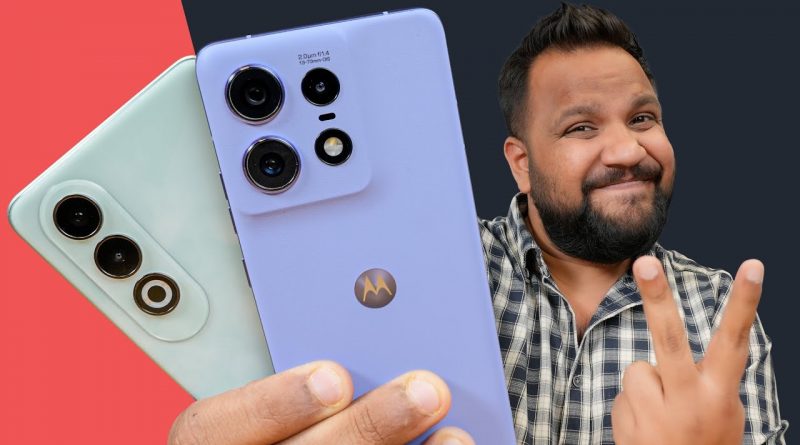Motorola Edge 50 Pro vs OnePlus Nord CE 4 Full Comparison – The Video YOU Wanted!
Guys, who should I compare to the Moto H50 Pro next? Head to YouTube and search for H50 Pro to find out. Your wish is my command. Let’s settle the debate here. I’ll let you know if you should opt for the OnePlus instead of the C4. So, stay tuned till the end. If you’re here for the first time, I’m M, and you’re watching Track and English, your go-to destination for detailed and insightful reviews. Let’s address the elephant in the room first. The H50 Pro’s UFS 2.2 has sparked controversy, but the C4 comes with UFS 3.1, giving it an edge in sequential write speeds over the H50 Pro. However, in random write speeds on another storage test, the X50 Pro outperforms the C4. Moto mentions that this is due to optimizations they’ve implemented in the storage, possibly involving RAM caching or storage compression techniques. I’m not entirely certain about it, but credit should be given where it’s due. Bbom was the first to spot this. Alright, moving on, what about the actual performance of the Snapdragon 7 Gen 3? Well, the benchmark scores are quite similar, whether it’s Geekbench or AnTuTu. Speaking of which, have you seen the H50 Pro’s AnTuTu score? I’m really curious about Track and English. to achieve that subscriber goal by the end of 2024, and your support is crucial. Simply hit the subscribe button. During your daily browsing of Instagram or using various apps, everything runs smoothly. However, some animation enthusiasts expressed concerns about the N C4’s occasional stuttering animations. While this may be an issue for those who are particular about it, most users won’t notice or mind. On the contrary, Miz animations are very smooth without any problems. Additionally, we conducted a standard 40 During a 30-minute CPU throttle test, the CPU on the Mota S50 Pro throttles more compared to the N C4. However, when gaming on both phones, playing Genshin Impact at the highest graphics and 60 frames per second, Mula actually had higher average frame rates than Nod. All Things Considered, OnePlus excels in performance. Moving on to the cameras, there’s no confusion here. Motorola boasts better specs with an extra 3x telephoto camera compared to OnePlus. In our comparison of primary cameras, Motorola captures more details and sharper, albeit slightly oversharpened, textures. The HDR performance is superior as well, with better highlight control and more details in shadows. While OnePlus reduces noise, it also sacrifices detail. Color accuracy is superior on Motorola, thanks to Pantone validation.
The color consistency with the ultra-wide is close to natural on the Motorola H50 Pro compared to the N C4. However, the Pantone skin tone validation is slightly off on Motorola, showing a yellowish tint in primary camera shots. OnePlus, on the other hand, exhibits a reddish tint in skin tones. In low light, Motorola’s algorithm excels in bringing out detail and improving exposure compared to OnePlus. Motorola’s 3x optical zoom captures more detail than OnePlus, both in daylight and low light. Additionally, Motorola’s 13MP ultra-wide camera outperforms OnePlus’ 8MP counterpart, offering autofocus and enabling impressive macro shots. The 50MP selfie camera on Motorola captures detailed and sharp images with more neutral skin tones compared to OnePlus. Edge detection and bokeh effects are superior on Motorola, even in low light. Video recording across all cameras on the Motorola H50 Pro is top-notch, with proper stabilization and sound quality. The display on Motorola is superior, offering higher resolution, refresh rate, brightness, and better HDR gradation. Pantone color validation further enhances color accuracy on Motorola’s display. On the other hand, OnePlus now supports Netflix HDR and features superior haptic feedback. Both phones offer LHDC and LDX support, stereo speakers, and Dolby Atmos. Motorola excels in audio quality, while OnePlus wins in haptic feedback depth. In terms of software, both phones offer clean experiences with minimal bloatware. Motorola introduces visual changes with Hello UI, including a redesigned quick settings panel and lock screen. Oxygen OS and Hello UI both run on Android 14, with OnePlus promising longer OS.



